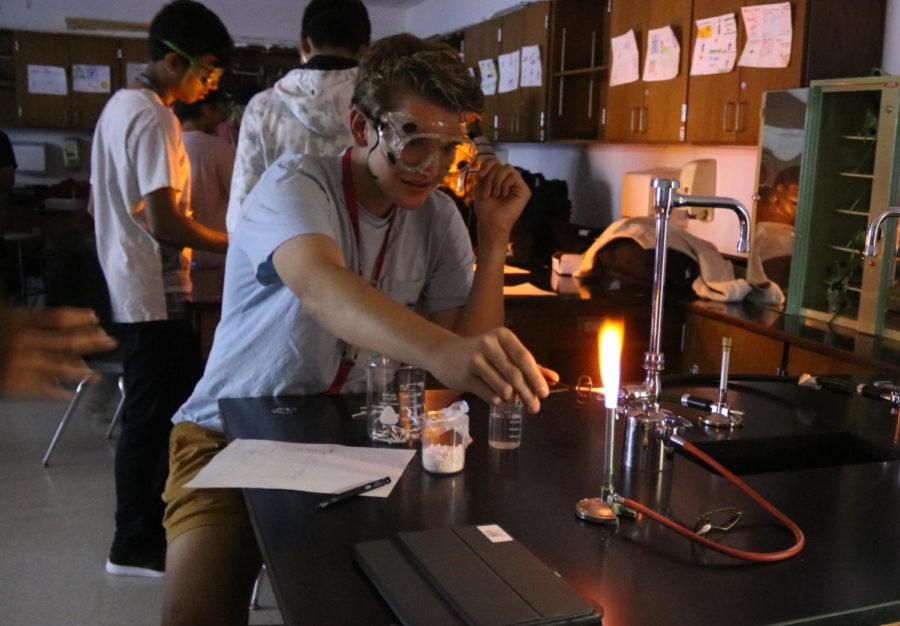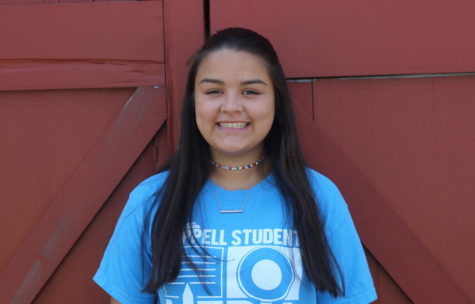On the Spot: Chemistry classes ignite interest through flame lab (with video)
Coppell High School sophomore Sven Collins observes the color change in the flames from the Bunsen burner in Mashal Khan’s third period chemistry class in C102 on Wednesday. Chemistry is currently in their electromagnetic spectrum unit.
October 24, 2019
Vibrant colors of flames reflected on students safety goggles as they hovered over ignited Bunsen burners with exclaims awe.
Coppell High School chemistry teacher Mashal Khan’s classes performed a flame lab on Wednesday for their electron configuration unit.
To further understand these concepts, students experimented with the purpose of determining the identity of the three unknown powders through a flame test and by using six known powders.
The experiment consisted of using wet cotton swabs with a specific powdered substance and hovering them over a Bunsen burner to observe the change in color of the flame.
While one student put the cotton swab in the flame, the other observed the color change through a spectrometer, which is a device that measures wavelengths of light over the wide range of the electromagnetic spectrum, and documented through pictures.
Learners switched stations to test different powdered substances, record in their data tables, and use this information to determine the unknown substances.
Khan uses this experiment to tie together different concepts such as wavelengths, energies, and frequency as well as the electromagnetic spectrum. Students learn how different colors of flames corresponded to certain wavelengths which corresponded to certain energy.
“This is one of the most favorite labs students get to do since it’s a more hands on experience,” Khan said. “It lets them figure out scientific skills like analyzing data and collecting and figure out how everything is connected together.”
The stations not only help teach the content, but also shows a creative approach to learning the concepts.
“It gives us a hands on opportunity to actually experiment instead of learning on a screen,” CHS sophomore Natalie de la Iglesia said.
The lab consists not only of igniting flames, but also igniting an interest for the concepts. Students have performed experiments before, however, this lab ventures outside of what they have usually been exposed to.
“It’s impressive to see overall how different types of elements react with the flames,” CHS junior Shabbir Bohri said. “The reactions we are seeing from everyone including myself are pretty cool because it’s the first time we are seeing a lot of these things.”
Follow @alishbaj24 and @CHScampusnews on Twitter











